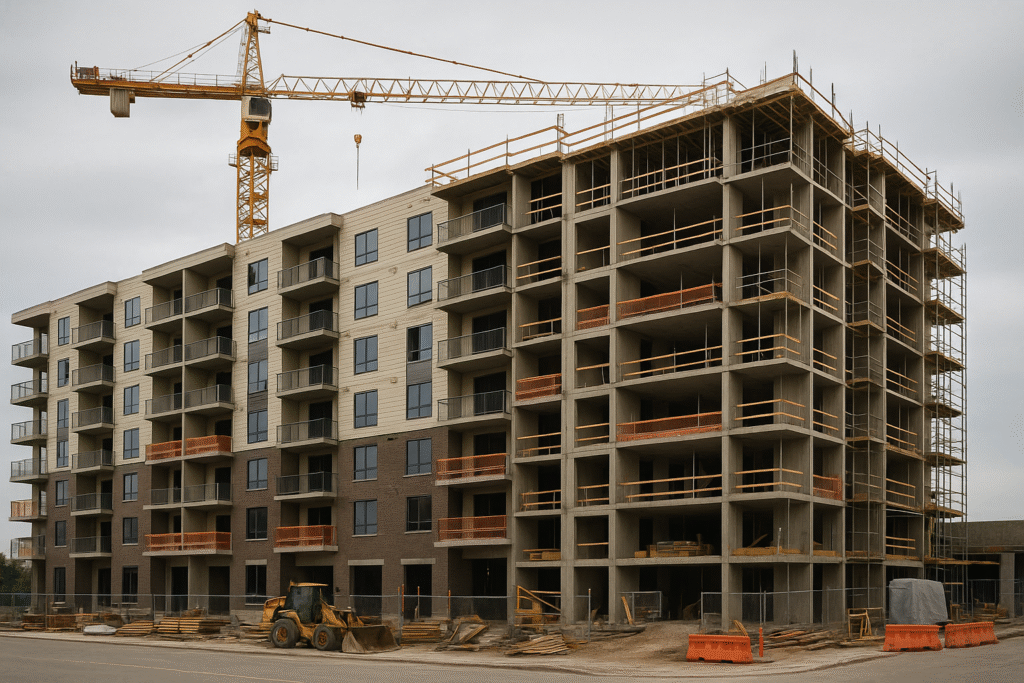
Let's Talk HST in Commercial Real Estate.
Every HST-registered business understands the basics of HST. You charge it on goods and services you provide (outputs) and you pay it on goods and services you purchase to run your business (input tax credits, or ITCs). Every reporting period, typically quarterly, you either remit or claim the difference between HST outputs and HST input tax credits. That we all understand. But things can quickly become less clear. To use an example, let’s say a private consulting firm elects to purchase an office building and move away from leasing. For this example, the building purchased costs $2,000,000 and the buyer has some questions related to HST. The questions are as follows:
Question: Is the sale subject to HST?
Answer: Yes, it is.
Question: When do I pay the HST?
Answer: You must self-remit and account for the HST accordingly at that time.
Clearly, my second “answer” does not actually answer your question. The reality of the answer is that you must review your HST tax implications with your accountant. I am a commercial real estate agent, and I don’t give tax advice. What I am outlining here is my understanding of the process and presenting my recommendation, which is that you review this with your accounting professional in order to have the clarity you need. I also recommend that you work with a commercial real estate professional and transact your agreement to purchase on an OREA Commercial Form 500, which incorporates the following clause:

Clause 7 is very clear that the Buyer is responsible for HST. It is equally clear that the Buyer is saving the Seller harm from any HST claims and that both parties, Buyer and Seller, are HST registrants. What the clause does not answer is this: in our $2,000,000 purchase example, when is the $260,000 in HST payable? The clause also states the Seller will not collect the HST—this is important. In most transactions, you pay HST at the time of purchase, however this clause does not require you to pay the HST to the Seller. The government understands that this type of purchase is typically outside of your regular course of business. Based on the business’s flow of outputs and inputs, there would very likely be a large HST Credit owed to you as a result of the purchase. So rather than the business paying out the HST and applying for a large credit due back to the business, the HST on the purchase is self-assessed by the business for its input on your HST reporting period and in turn adjusted accordingly. Keep in mind this is just on paper—you never actually paid the HST, so that is factored into the final calculation. In essence, things wash out based on your current HST reporting period for filing of output and inputs relative to this purchase. Important note: The self-assessment must occur within the business’s next filing period and the property purchased must be for commercial use to apply.
Now, what would happen if the building being purchased is not 100% commercial use? Let’s say for our example that the purchase price of $2,000,000 includes $500,000 for the market value of a commercial component, but the sale comes with four apartments containing five appliances each. In this instance, the same OREA Form 500 would be used, however, there is no HST payable on the residential component (HST is not collected so unless it was newly created there is no HST Component as HST has not been collected on this portion of the asset), only on the commercial component. The only HST chargeable on the apartment sale would be based upon the value of the appliances included. As that is not part of your business, it would not be part of your input tax credit, as there is no HST on residential real estate. Beyond that, the process is based on the commercial components value within the building being purchased—which must be a fair market and supportable value. This value would be reported through the self-assessment process (As outlined above).
The last comment here to consider—and this is where a discussion with your accountant is highly recommended. That conversation should cover not just HST but a discussion on how you should take title to this property (same company or a HoldCo for this purchase). Should your business buy it or should a separate corporation be formed for this purchase to acquire the asset and in turn register as an HST Registrant for this purchase? When considering future retirement and estate planning, it may be advisable for a corporation to own the building. This way if you ever sell the business, you could still maintain the real estate and have the future buyer as your tenant. There are a host of other considerations, but clearly, the time to review these considerations is before you complete the transaction. Also note that pretty much any reasonable condition can be included in the deal, so if you are not sure who is going to take the title, your business or new corporation can be covered within the structure of the Agreement to Purchase (not uncommon at all). A condition of legal review and/or accountant review is easy enough to put in the deal so that you can have the clarity you need when purchasing. We have clauses we can incorporate into the transaction to assist.
Again, I prefaced this post that I am not qualified to give tax advice, therefore I highly recommend reviewing your situation with a professional accountant. This is their wheelhouse and I always value the input from your team of professionals when discussing a transaction.
I hope you find this information resourceful and as always, welcome the opportunity to Talk Commercial Real Estate!
Patrick Hulley, Broker of Record – Co-Owner
REMAX RISE Executives, Brokerage – COMMERCIAL DIVISION
Email: [email protected] C: 613 541 9821




